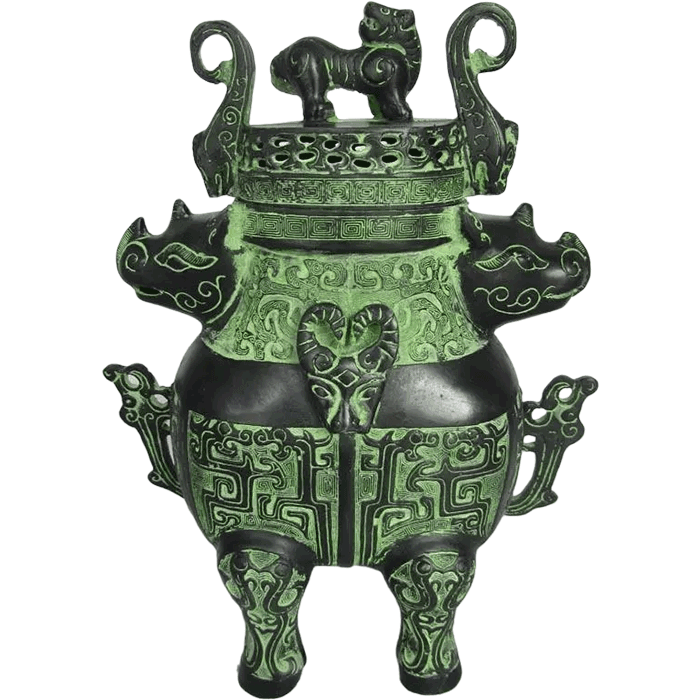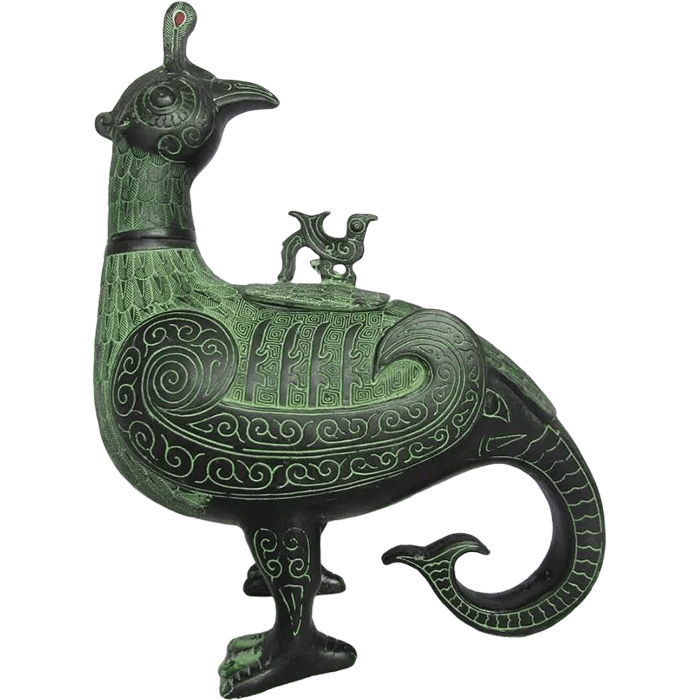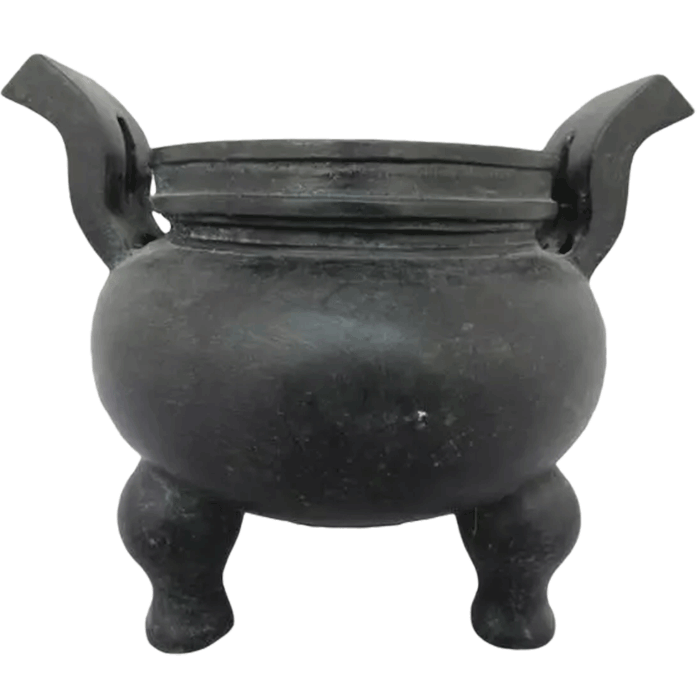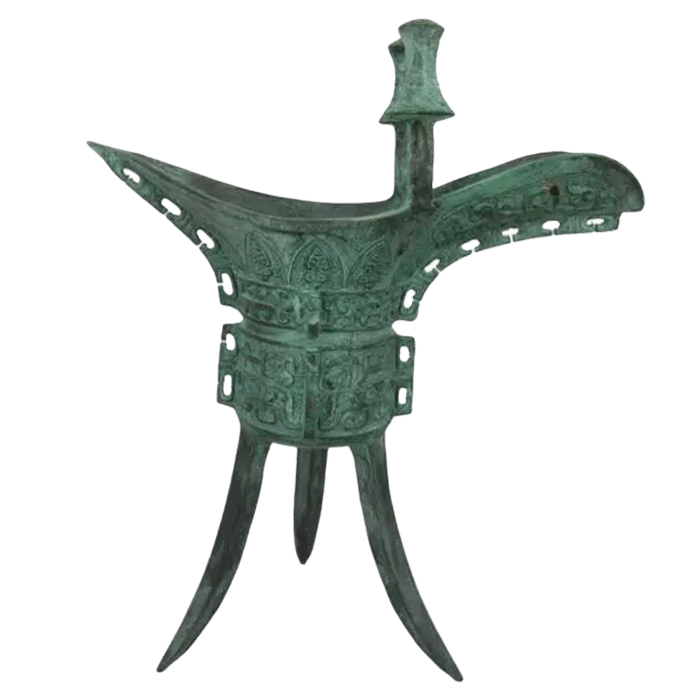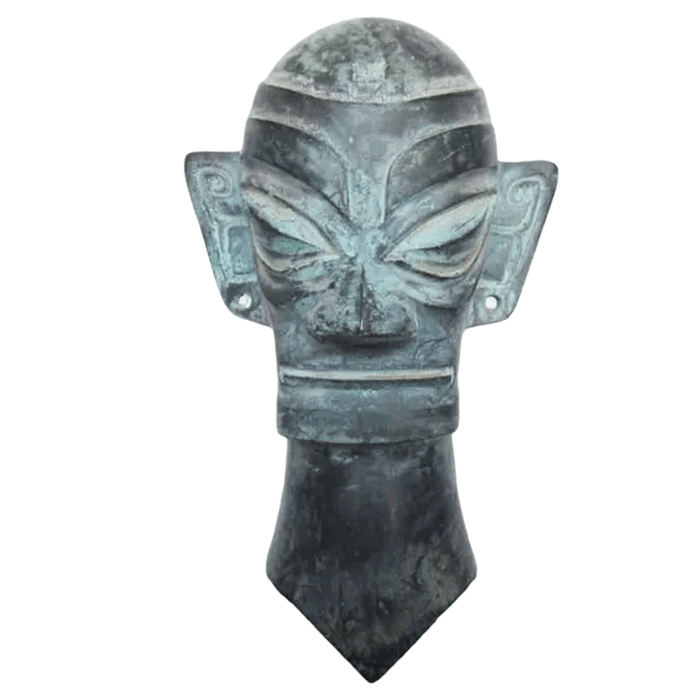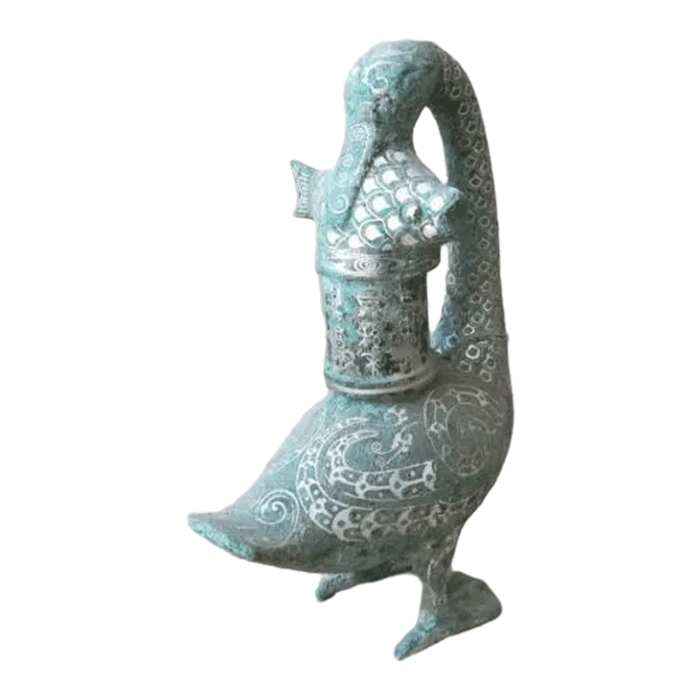Lotus Crane Square Pot and Yue Wang Goujian Sword
Lotus Crane Square Pot
Eastern Zhou
Spring and Autumn Lotus Crane Square Pot, a bronze wine or water container in the middle of the Spring and Autumn Period, unearthed in 1923 from the Tomb of Zheng Gong in Lijialou, Xinzheng, Henan Province, one is collected in the Bronze Museum of the Palace Museum in Beijing, and the other is in the Henan Museum, the first batch of banned in China Exhibit cultural relics abroad.
pass on history
The Lianhe Square Pot was unearthed in 1923 in the tomb of the King of Zheng Guo in the Spring and Autumn Period in Lijialou, Xinzheng, Henan.
After excavation, nearly 100 complete bronze wares were unearthed from the "Zheng Gong Tomb", as well as hundreds of cultural relics such as jade wares and pottery wares, known in history as "Xin Zheng Yi wares". Experts believe that this batch of cultural relics is a sacrificial weapon of the royal family of Zheng, and its owner may be a gentleman of Zheng Guoguo.
In 1927, Henan Province established the Henan Provincial Museum Preparatory Committee, and these bronze artifacts, which had gone through twists and turns, became the first batch of "treasures of the town hall" of the Henan Provincial Museum, which opened the way for Henan's cultural relics career. Someone said, "First there was the Tomb of Duke Zheng, and then there was the Henan Museum".
During the War of Resistance Against Japan and the War of Liberation, in order to protect the national treasure from looting and destruction, the "Xinzheng Yi Ware" went through many twists and turns, and it was preserved with great difficulty.
In the winter of 1949, the Kuomintang government instructed "to quickly transport the antiquities stored in Henan and Chongqing to Taiwan, and the Executive Yuan ordered the Ministry of Education and the Henan Provincial Government to follow suit." In a hurry, the ancient relics from Henan, such as the lotus crane square pot, were packaged and transported to Chongqing Airport, and they were about to board the plane and fly to Taiwan. The Chinese People's Liberation Army rescued the Lianhe Fanghu. The unboxing seal of the "Chongqing Military Control Commission of the Chinese People's Liberation Army" is still well preserved in the Henan Museum. However, some "Xinzheng Yiware" were transported to Taiwan.
In August 1950, representatives of Henan Province and the Ministry of Culture went to Chongqing to receive antiquities stored in Henan. The representative of the Ministry of Culture selected a lotus crane square pot with a slightly incomplete bottom and a height of nearly 126 centimeters to transfer to the Palace Museum in Beijing. Since then, the two lotus and crane square pots have been placed in two places.
In 1999, the lotus and crane square pot, which was imitated by Zhongding bronze ware, was designated as a diplomatic gift by the State Council and presented to state leaders, foreign presidents and prime ministers.
Heritage features
The lotus crane square pot is a pair of two pieces, but there is a slight difference in height. The Forbidden City has a height of 125.7 centimeters, which is called "Lihe square pot", and the Henan Museum has a height of 126.5 cm, which is called "lotus and crane square pot". The weight of the two square pots is the same, both 64.28 kg, with a square mouth, 30.5 cm long and 54 cm wide.
The body of the pot is flat and square, and the belly of the pot is decorated with coiled dragon patterns, and the dragon horns stand upright. There is also a mythical beast decorated on each side of the pot body, with curved horns, wings growing from the shoulders, and a long tail curling up. There are two capuchin beasts under the ring feet, with scales on their bodies, their heads turned outward, and branched horns. The momentum of the capuchin beast supporting the body of the pot and the dragons and beasts decorated on the body of the pot echoing each other. The lid of the pot is cast in the shape of lotus petals, a circle of plump double-layered petals spread out to all sides, and the petals are covered with hollow holes. There is a small movable cover in the center of the lotus petals, on which there is a crane standing in the center of the petals. The crane seems to be raising its head and fluttering its wings, looking up into the distance, with a smart shape.
Cultural Relics Appreciation
From the perspective of production technology, the casting of the lotus crane square pot adopts various techniques such as round carving, bas-relief carving, fine carving, and welding. Not only are the patterns delicate and novel, but also the structure is complex and the casting is exquisite. do.
In the center of the lotus petals stands a fresh and elegant white crane (crane), flying its wings, single its foot, slightly gapping its beak in the shape of wanting to cry, breaking through the majesty of the ancient times, full of ambition, looking down on everything, trampling on the traditional world Under its feet, it wants to fly higher and farther. There is a centrifugal forward trend, which is the most symbolic of the spirit of the times striving for liberation and welcoming the dawn.
Yue Wang Goujian Sword
spring and autumn
The Goujian Sword of the King of Yue, a bronze ware of the Yue State in the late Spring and Autumn Period, was unearthed from Chu Tomb No. 5, Mashan, Jiangling, Hubei. Known as "the best sword in the world". Collected in Hubei Provincial Museum.
Heritage History
In 494 BC, the armies of Wu State and Yue State fought a life-and-death fight, and the Yue Army was defeated. After presenting the peerless beauty Xi Shi, Gou Jian, king of Yue, became the groom of Fu Chai, king of Wu.
Twenty years later, Gou Jian returned to the Yue Kingdom after suffering hardships and humiliation. He appointed virtuous ministers, developed production, and made a comeback. It took 9 years to destroy the state of Wu and became the last overlord in the Spring and Autumn Period. "Jiuqian" is the name of Goujian, the king of Yue, who tried his best. And this sword is the King's Sword of the Spring and Autumn Overlord.
In December 1965, archaeologists unearthed more than 600 artifacts in a Chu state tomb in Jiangling, Hubei, including this bronze sword. The archaeologists present recalled that a mining team member accidentally cut his finger while holding a sword, bleeding profusely. Someone tried its sharpness again, and with a little force, the 16 layers of white paper were cut through. This sword is 55.7 cm long, 4.6 cm wide, 8.4 cm long, and weighs 875 grams. There are two lines of inscriptions in bird seal near the sword grid: "Yue Wang Jiuqian (Goujian) used the sword from Zha (made)", which proves this sword It is the legendary Yue King Goujian Sword.
The Yue Wang Goujian sword is exquisitely crafted, showing the excellent skills of the swordsmith. This sword is cold and extremely sharp. After more than 2,400 years, the decoration is still clear and exquisite. In addition, "things are named after people", the historical and cultural value is very high. It can be called the national treasure of our country.
The sword of King Goujian of Yue was unearthed in the tomb of the nobles of Chu State in Jiangling, Hubei. There are two main opinions: one is the dowry theory. Goujian once married his daughter to King Zhao of Chu as his concubine. Later, the king of Chu gave it to a certain nobleman, so it became the burial object of the nobleman of Chu State. Another opinion is the spoils of war, that is, from 309 BC to 306 BC, when Chu State sent troops to Yue State, the Chu army captured the sword, brought it back to Chu State, and finally became a funeral object.
Heritage features
The sword of Yue Wang Goujian is 55.7 cm long, the hilt is 8.4 cm long, and the sword is 4.6 cm wide.
The body of the sword is covered with regular black diamond-shaped dark lattice patterns, the front of the sword grid is inlaid with blue glass, and the back is inlaid with turquoise. The blade is long and slender with a central ridge, two secondary blades are sharp, and the forward arc is concave.
The Goujian sword of Yue King has been stainless for thousands of years because the body of the sword is plated with a layer of chromium of 0.1mm. After non-destructive scientific testing, its main alloy components are copper, tin, lead, iron, sulfur and so on. The pattern has high sulfur content, because copper sulfide can prevent rust. It is amazing that this anti-rust technology existed as early as 2500 years ago.
In 1983, another Chu tomb one kilometer away was unearthed with the spear of Fucha, the king of Wu. The inscription on it was exactly the same as this sword: "Fucha, the king of Wu, used his own spear", which is now also collected in the Hubei Provincial Museum.
Sculpmart is a professional bronze art and bronze wares manufacturer providing Chinese Bronze Handcraft arts which will allow you to have a chance to own a masterpiece of Chinese bronze sculptures. If you like, you may choose the style to customize, send us the image and design, our craftsman will reproduce and cast a perfect bronze ware for you.


